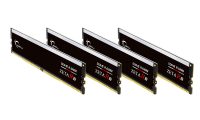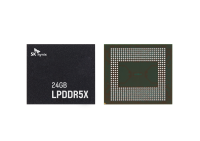Laut einem Bericht der EETimes plant die für Speicher-Standards zuständige JEDEC zur Mitte des nächsten Jahres die Spezifikationen für den DDR4-RAM-Standard zu verabschieden. Neben höheren Taktraten soll dieser mit 1,2 Volt auch eine niedrigere Spannung als DDR3-RAM (~ 1,5 Volt) besitzen. Ab 2013 soll es dann sogar Speichermodule mit einer Spannung von nur 1,0 Volt geben. Allerdings ist bislang nicht bekannt, ab wann die Prozessorhersteller AMD und Intel den neuen Speicherstandard unterstützen werden.
Da das Speicherinterface bei beiden Herstellern mittlerweile in die CPUs integriert ist, lässt sich der Umstieg auf einen neuen Speicherstandard nicht mehr über einen neuen Mainboard-Chipsatz realisieren. Dementsprechend ist davon auszugehen, dass AMD und Intel DDR4-RAM frühstens 2013 mit einer neuen Prozessorgeneration unterstützen werden.
Weitere Details zum DDR4-Speicherstandards:
- New JEDEC POD12 interface standard for DDR4 (1.2V).
- Three data width offerings: x4, x8 and x16.
- Differential signaling for the clock and strobes.
- New termination scheme versus prior DDR versions: In DDR4, the DQ bus shifts termination to VDDQ, which should remain stable even if the VDD voltage is reduced over time.
- Nominal and dynamic ODT: Improvements to the ODT protocol and a new Park Mode allow for a nominal termination and dynamic write termination without having to drive the ODT pin .
- Burst length of 8 and burst chop of 4.
- Data masking.
- DBI: to help reduce power consumption and improve data signal integrity, this feature informs the DRAM as to whether the true or inverted data should be stored.
- New CRC for data bus: Enabling error detection capability for data transfers – especially beneficial during write operations and in non-ECC memory applications.
- New CA parity for command/address bus: Providing a low-cost method of verifying the integrity of command and address transfers over a link, for all operations.
- DLL off mode supported.
Quelle: EETimes



Neueste Kommentare
22. Juli 2024
16. Juli 2024
15. Juli 2024
9. Juli 2024
4. Juli 2024
3. Juli 2024